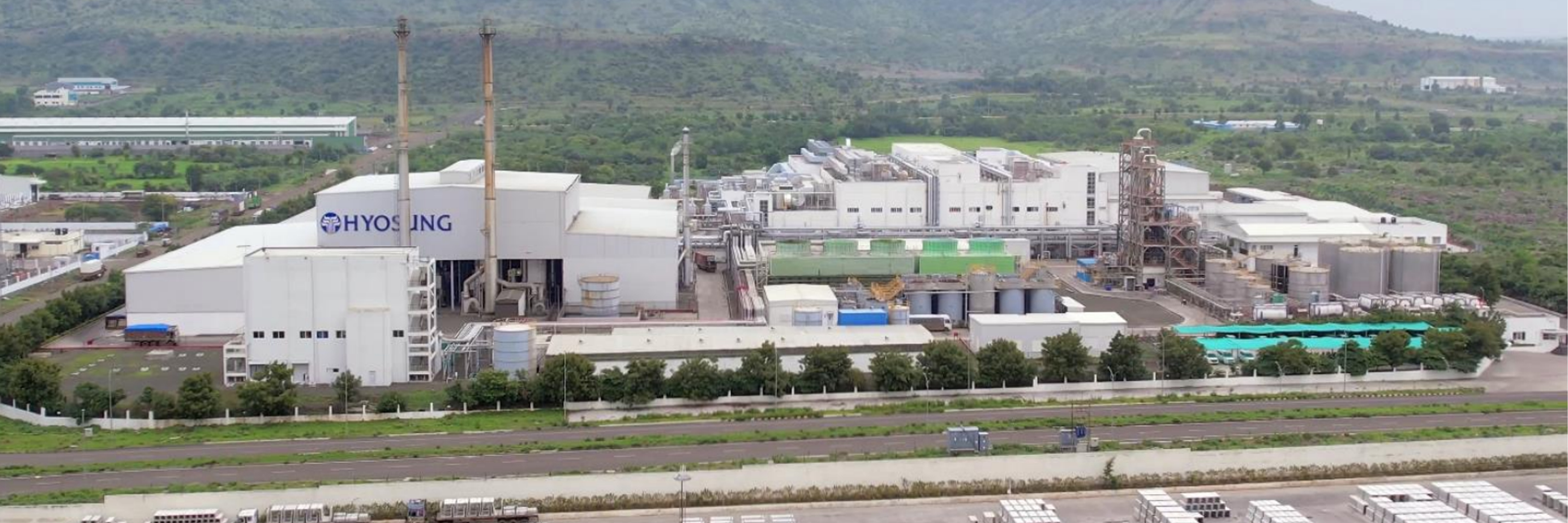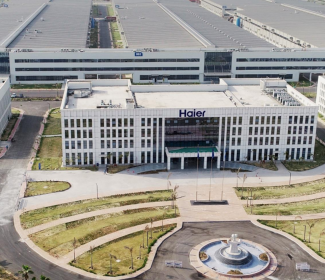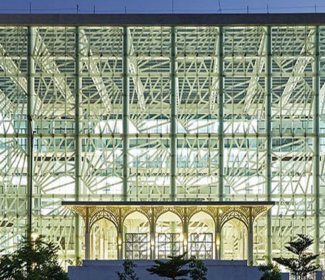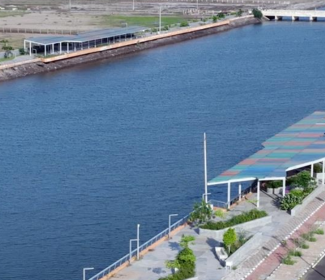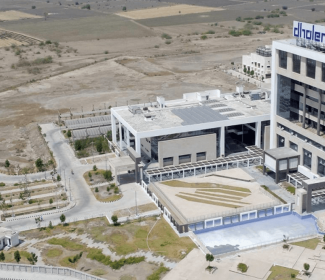India’s ambitious vision to redefine its industrial landscape is coming to life with some transformative projects leading the charge.
The Government of India had previously approved eight projects across seven states. Distributed six under the Delhi-Mumbai Industrial Corridor (DMIC) and two under the Chennai-Bangalore Industrial Corridor (CBIC), major infrastructure is complete in four key projects.
Dholera in Gujarat, Shendra-Bidkin in Maharashtra, Greater Noida in Uttar Pradesh and Vikram Udyogpuri in Madhya Pradesh.
For example, the Vikram Udyogpuri (VU) project is established to boost employment, industrial output and regional exports by attracting quality industrial investments and providing world-class infrastructure.
Located in Narwar village, close to Ujjain and Dewas, the project spans 1,096 acres and features trunk infrastructure and supporting social and physical amenities, strategically positioned along SH18 within the Delhi Mumbai Industrial Corridor (DMIC) region.
VU is designed to create a sustainable economic base focusing on manufacturing and is supported by institutional, residential and commercial activities.
Shendra-Bidkin
Nestled on the outskirts of Aurangabad in Maharashtra, the Shendra-Bidkin Industrial Area (SBIA) is a shining star within the DMIC project.
Spanning 10,000 acres, the Aurangabad Industrial City (AURIC) stands as one of India’s first greenfield smart cities. This integrated industrial township strikes a perfect balance with 60% of its area dedicated to industrial use, while the remaining 40% is earmarked for residential, commercial and social amenities.
Shendra-Bidkin’s state-of-the-art infrastructure features dedicated freight corridors, advanced utility systems and modern waste management solutions.
The area is envisioned as a large-scale industrial cluster, offering abundant land and comprehensive infrastructure services to high-growth industries. Its proximity to existing industrial zones, Aurangabad city and critical transportation networks like the airport and railways, makes it a prime location for export-oriented businesses.
At Shendra-Bidkin, key sectors such as automotive components, technical textiles, pharmaceuticals, green energy and logistics are flourishing, marking it as a major industrial hub.
With a ₹5,000 crore investment from Novolipstek Steel and contributions from Hyosung India, Kirtee Thermopack, Perkins India and Coatall Films, the park has generated thousands of jobs and driven rapid growth.
Its advanced technologies and strategic focus underscore Shendra-Bidkin’s role as a symbol of industrial excellence in India.
Dholera
In Gujarat, Dholera is setting new standards in smart and sustainable urban development. Spanning 920 square kilometres, this greenfield smart city is the largest node on the DMIC, poised to become a leading global manufacturing hub.
Its strategic location along a six-lane expressway and dedicated freight corridor ensures seamless connectivity, with the forthcoming Dholera International Airport further enhancing its attractiveness. The city features an advanced underground utility network and a scalable smart water management system, designed to meet future demands and support its ambitious growth.
Renewable energy is at the heart of Dholera’s development. The city’s solar park can generate 4,400 MW of energy, contributing to India’s national goal of producing 250 GW of green energy by 2030.
Dholera has already attracted significant investments from companies like Tata Chemicals, ReNew Power and Polycab India, signalling strong investor confidence in its potential.
Additionally, ReNew Power is setting up a two-GW solar cell and module manufacturing facility, expected to generate employment for nearly 1,250 people in Gujarat.
The Dholera Industrial City Development Limited ensures efficient governance and provides a comprehensive ecosystem for diverse industries. Dholera is certainly reshaping urban development with its advanced utilities, smart transport systems and renewable energy solutions.
Expected to create thousands of jobs in IT, manufacturing and logistics, the city’s focus on sustainability and smart technology is attracting global investors. Additionally, Dholera is set to become India’s first semiconductor city, with Tata Electronics collaborating with Taiwan’s PSMC to establish a semiconductor fabrication plant.
Greater Noida
The DMIC Integrated Industrial Township Greater Noida Limited (IITGNL) exemplifies the impact of strategic location and top-tier infrastructure on industrial growth.
A collaboration between NICDIT and GNIDA, IITGNL is key to expanding India’s manufacturing and services sectors, positioning DMIC as a global hub. Backed by robust connectivity via expressways, dedicated freight corridors, an international airport and railways, the Greater Noida project supports diverse industries from electronics to renewable energy.
Major companies, like Haier Appliances and Chenfeng Tech, have established operations, and created thousands of jobs, boosting regional growth. IITGNL’s success underscores the value of well-planned industrial corridors, highlighting its high-quality infrastructure and investor-friendly environment, reinforcing the DMIC initiative’s effectiveness in a sustainable manner.
The success of these industrial parks stems from their investor-friendly features. They offer plug-and-play infrastructure and 24x7 high-quality utilities, ensuring quick and efficient business set-up.
Here, circular economy practices guarantee zero-wastewater discharge, while ICT-enabled systems provide citywide Wi-Fi, surveillance and smart traffic management. Integrated waste management and streamlined processes enhance sustainability and efficiency, supported by a “single window” system and e-land management for fast approvals.
Transparency is maintained with effective grievance resolution, Building Information Modelling (BIM) for asset management and a walk-to-work concept that integrates residential, commercial and recreational areas. Additionally, renewable energy sources like solar and wind further boost their appeal to investors.
How can these developments transform regions?
New industrial parks are emerging as powerful catalysts for economic growth, job creation and technological advancements.
“The creation of these green industrial hubs is not just about economic growth, it’s about uplifting regions that have been underserved — creating job opportunities, technological innovation, skilling the workforce, training them for the future, instilling a sense of circular economy and how it helps the environment and more importantly bringing in sustainability in the traditional work process,” says Ananthanarayanan Shanmugam, Senior Vice President & Chief Facilitation and Govt Relations officer (State Facilitation) at Invest India.
“The advanced infrastructure in these smart industrial cities will reduce logistics costs and improve supply chain efficiencies, making India a preferred destination for global investors,” adds Shanmugam.
Let’s get into some more details here.
- Economic growth and investment: Strategically located industrial parks attract billions in investment, boosting local economies and fostering robust industrial landscapes.
- Job creation: These parks are set to create millions of jobs across diverse sectors, reducing regional unemployment through direct and indirect employment opportunities.
- Technological advancements: Designed as smart cities, these parks integrate cutting-edge technologies, enhancing operational efficiency and quality of life.
- Infrastructure development: World-class infrastructure and transport networks elevate living standards and attract businesses, connecting parks to major urban centres.
- Sustainability initiatives: Focused on self-sustainability, these parks incorporate green energy and eco-friendly practices, attracting investors and promoting long-term viability.
Looking ahead
Certainly, the success stories from Vikram Udyogpuri, Shendra Bidkin, Dholera and Greater Noida set out examples before the new industrial smart cities that have been approved in Uttarakhand’s Khurpia, Rajpura-Patiala in Punjab, Dighi in Maharashtra, Palakkad in Kerala, Agra and Prayagraj in Uttar Pradesh, Gaya in Bihar, Zaheerabad in Telangana, Orvakal and Kopparthy in Andhra Pradesh and Jodhpur-Pali in Rajasthan.
These groundbreaking projects showcase the transformative power of strategic planning, cutting-edge infrastructure and sustainable practices in igniting economic growth, job creation and technological advancement.
Their remarkable successes lay a robust foundation for future initiatives, promising to surpass these achievements. These new industrial parks are poised to become dynamic engines of economic progress and innovation with substantial investments, innovative technologies and a relentless focus on sustainability,
By emulating these successful models, India is set to reinforce its status as a global industrial powerhouse, setting unprecedented standards in industrial development and driving the future of economic growth.

